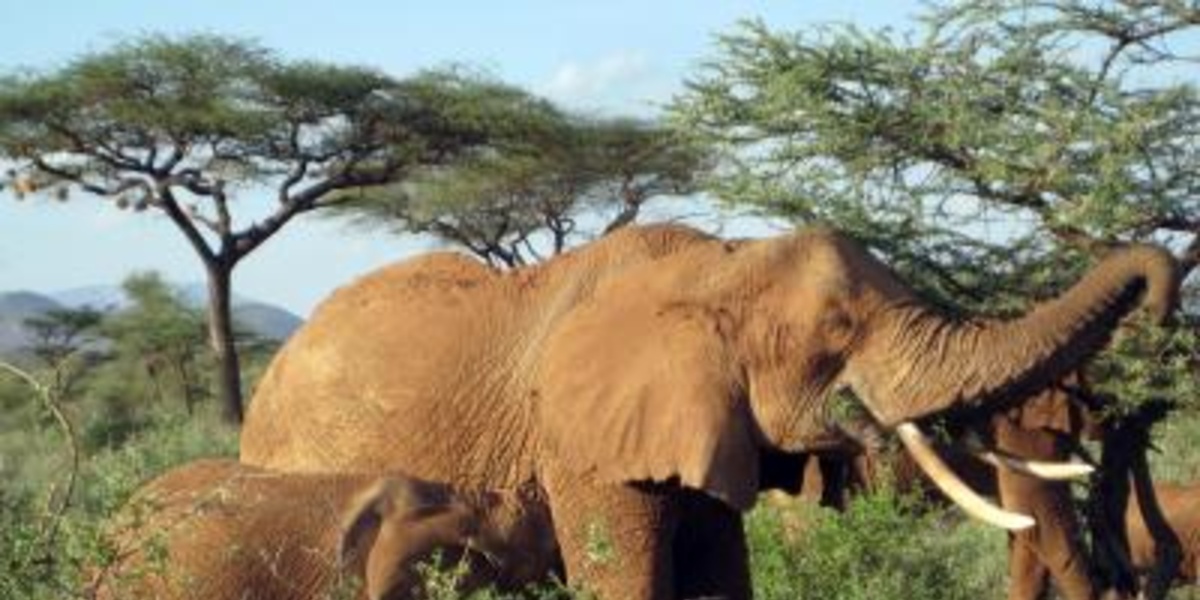Sometime in the distant past, grazing animals on the African Savannah switched their diets from trees and shrubs to grasses. And carbon isotopes tell the tale. A research team led by University of Utah geology doctoral student Kevin Uno and geobiology Professor Thure Cerling published a paper in the Proceedings of the National Academy of Sciences (April 4) detailing how fossil teeth of African animals reflected changes in the grazing habits of different African herbivores millions of years ago. Between 10 million and 3 million years ago, animals switched from eating trees (C3 plants) to warmland grasses (C4 plants). C3 and C4 plants have different ratios of C12 and C13, that is reflected in the bodies of animals. Uno and the team looked at teeth, a body part that preserves quite well. Some key findings include:
- Ancient equids, from which the zebra evolved, were the first herbivores to develop a diet primarily of C4 grass. Between 9.9 million years ago and 7.4 million years ago, they made a rapid transition, geologically speaking, from eating trees and shrubs to eating almost exclusively C4 grasses.
- Relatives of the rhino also adopted primarily C4 grass diets before most other families, as far back as 9.6 million years ago. However, some kept browsing on trees and shrubs or had mixed diets of those plants plus C4 grasses. Thus, different rhino species were not necessarily competing for the same food – as is true with modern rhinos.
- Two elephant ancestral lines, elephantids and gomphotheres, did not begin their switch to C4 grass until about 7.4 million years ago, but once they did, they remained grazers until very recently, probably in the last million years or so. Today, African and Asian elephants eat mostly C3 trees and shrubs.
- Suids, ancestors of bushpigs and warthogs, were slow to eat C4 grass. Few ate it more than 9 million years ago, and only from 6.5 million to 4.2 million years ago did suids have a diet that either was a mix of C3 leaves and C4 grasses or dominated by grasses. Modern suids occupy many ecosystems, so they have diets with both kinds of plants.
- The common hippo today eats mostly C4 grass, but 9.9 million years ago, its ancestors were only eating C3 trees and shrubs. The change was gradual.
- Bovids – which today include gazelles, wildebeest and cape buffalo – were eating C4 grass by 9.6 million years ago, but some species maintained C3 diets, some ate C4 grasses and others ate both.
- Now-extinct deinotheriids, which had two tusks in the lower jaw and were relatives of elephants, show no sign of C4 grass in their diet throughout their history.
- Giraffids, which gave rise to the modern giraffe, relied only on C3 plants throughout the record, in part because their long necks are designed to get to leaves in trees, not grass at their hooves.
The Picarro team found another use for this C3/C4 differential at the EGU 2011 event in Vienna, where we ran live samples of human hair collected from booth visitors. North Americans showed a much higher propensity toward inclusion of C4 plants (corn) in their diets as compared to Asians and Europeans (who eat much less corn-based food and meat). We used our Combustion Module - CRDS system for this. So when you eat that burger, remember - your hair tells the tale (as does your teeth).

